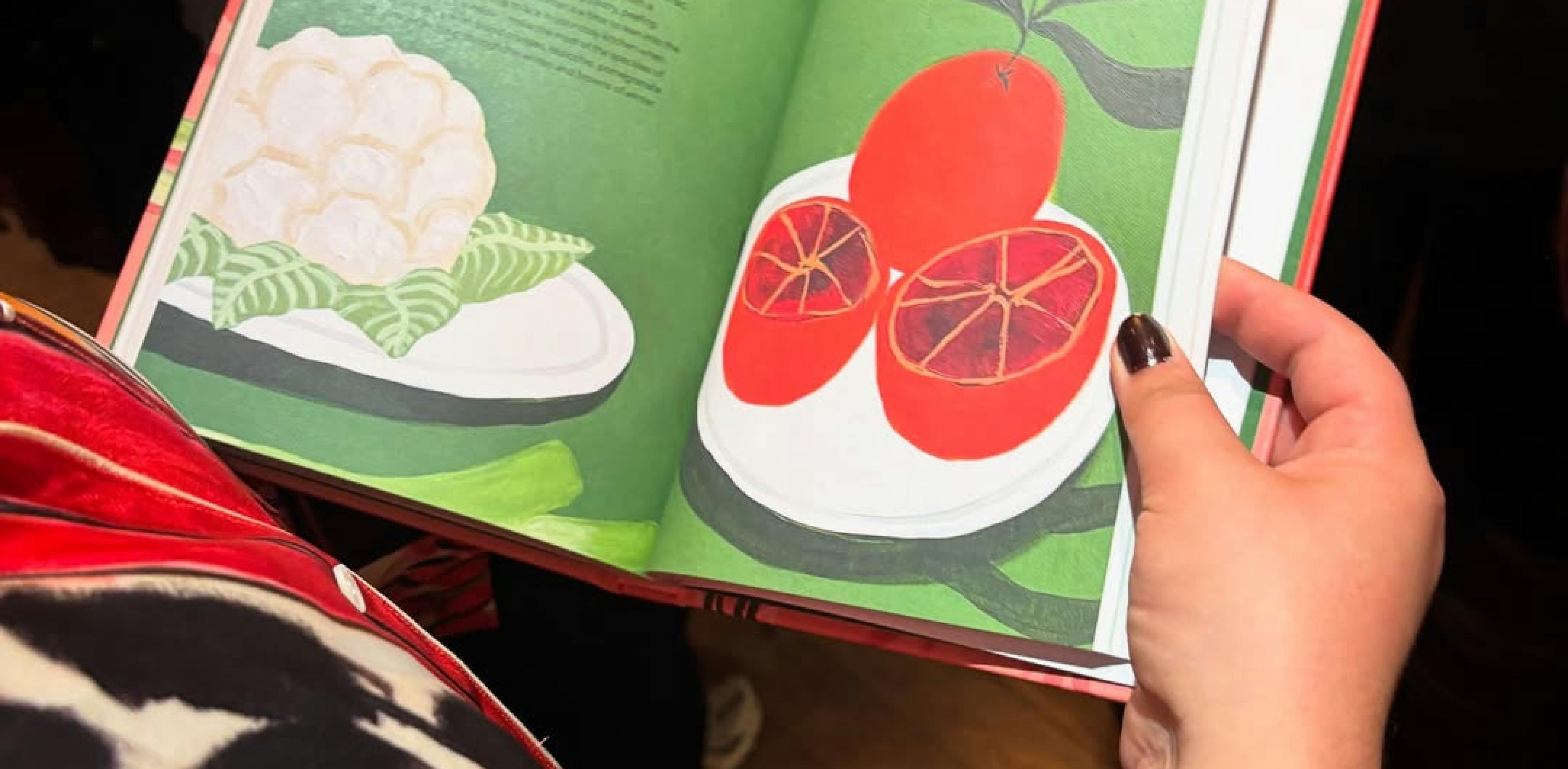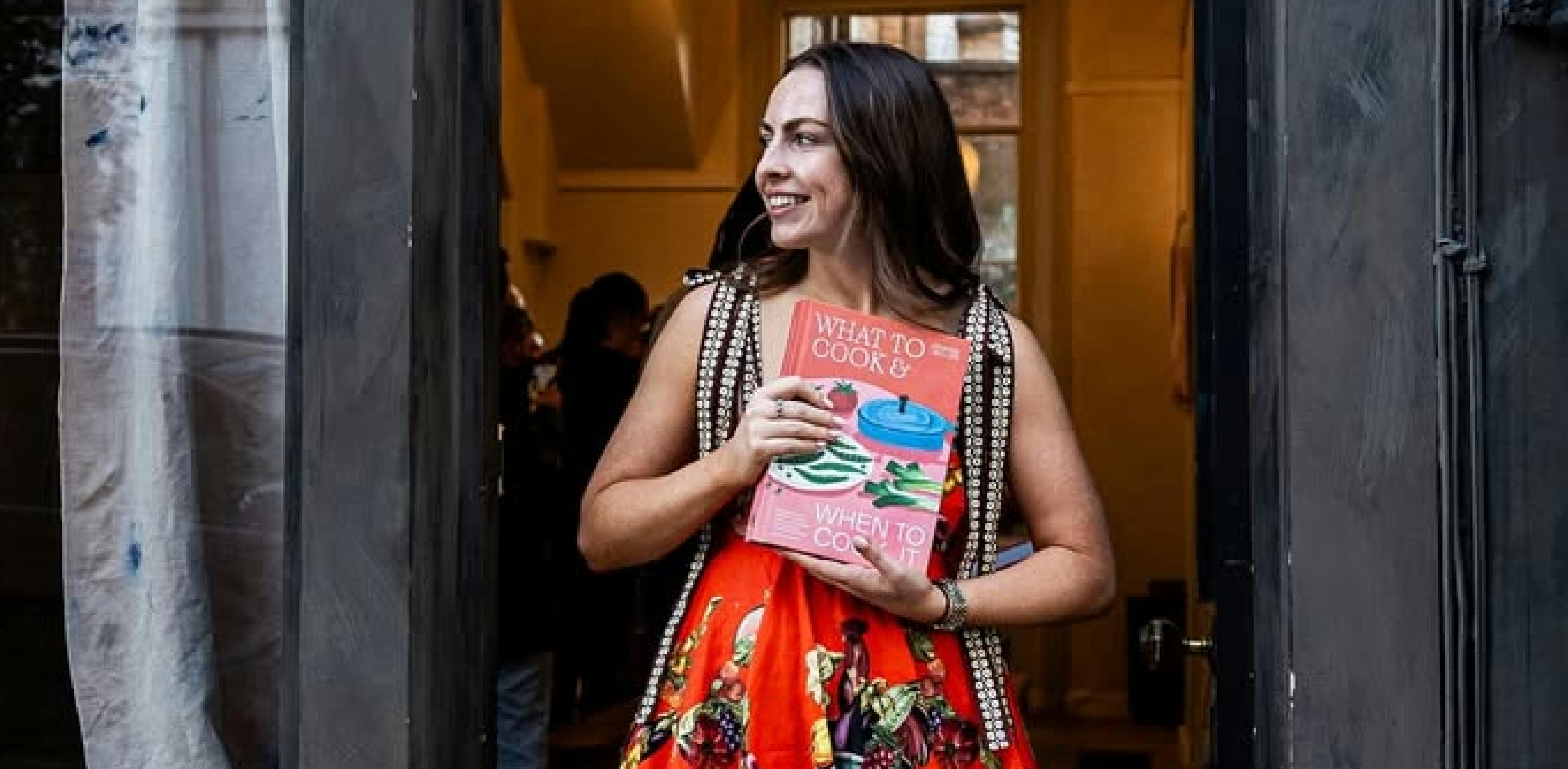

Food and Hosting
Georgie Mullen's Kitchen Table
18.09.2025
Put the kettle on and spend five minutes with Georgie Mullen (@georgieeats), whose debut cookbook What to Cook & When to Cook It celebrates cooking with the seasons. Georgie’s journey began at 14, when she started cooking for her mum, who had early-onset Alzheimer’s. What began as necessity grew into joy, guided by well-thumbed recipe books and a curiosity for flavour. Since 2018, Georgie has shared her recipes online, building a loyal community, cookery classes, and now her first book - rooted in food that’s generous, relaxed, and full of memory.
Interview with Georgie
What first inspired you to get into food writing and content creation? How did your journey begin?
I didn’t grow up with food as the centre of family life - we never sat around the table, and neither of my parents were cooks. My love for cooking began unexpectedly when my mum was diagnosed with early-onset Alzheimer’s when I was 14. I started cooking for the two of us out of necessity, but it quickly became the most joyful part of my day. I’d open a recipe book at random and cook whatever I found there, experimenting with ingredients and techniques, hungry to learn - everything I know I owe to my recipe books. In 2018, I began sharing my recipes online and on social media through Georgie Eats (@georgieeats), which eventually grew over many years into cookery classes, a loyal community, and now my first book.
Who are the people that inspire you in your career?
I’ve always been inspired by writers and cooks who make food feel approachable, yet rooted deeply in a sense of place, season or person; who make dinner feel personal and alive - Nigel Slater, Diana Henry, Nigella Lawson, Anthony Bourdain. Their work reminds me that food and cookery writing isn't just about recipes, it’s about telling a story and evoking a feeling. I’ve always loved writing just as much as cooking, and for me, the magic lies in bringing those two passions together. I also draw huge inspiration from the farmers, growers and producers I meet, and their deep connection to the land and the ingredients it produces.
When developing a new recipe, where does the process begin — is it led by flavours, feelings, or memories?
Usually, it begins with what’s in season - a crate of tomatoes, a bundle of asparagus, or the first peaches of summer. From there, it’s led equally by flavour and feeling: what I want to eat in that moment - do I want to create a dinner recipe, or a dessert? What else needs using up? What spice will complement this vegetable? If I am in a writing mood, I can think of 5 or so recipes with reasonable ease, but there are times, too, where I have very little inspiration. I try to make the most of my writing moods, noting down as many dish ideas as I can. When I get stuck, I turn to The Flavour Thesaurus by Niki Segnit, which helps to spark an idea.
How would you describe your cooking style in three words?
Modern, generous, relaxed.
What’s the most valuable piece of advice you’ve learned that you think every new cook should know?
Trust yourself. Use recipes as a guide, but don’t be afraid to adapt them to what you have and what you love. With time, cooking becomes intuitive - and that’s when it’s at its most fun. Also, salt! Salt your food well! It’s the difference between a good cook and a great cook.
What dish brings you the most comfort or feels most like home?
Soda bread with lots of salty butter. My mother was Irish, so it was always in our house. Warm from the oven, there is nothing that gives me more comfort.
How do you balance style and practicality when presenting your food, especially in ways that feel helpful for hosting?
I think food should look beautiful without being fussy. For hosting, I lean towards generous sharing platters - big bowls of salads, big delicious tarts, or a cake on a stand in the middle of the table. I think visual impact should come from letting vibrant, seasonal ingredients shine, rather than overcomplicating the plating. I have a rule that I never touch the plating of a dish too much - I let the basil fall where it falls, I let the sauce drip where it decides too; a dish should never look too clean or even.
What inspired you to write your book What to Cook & When to Cook It? Was there a recipe you knew had to be included from the start?
The book came from my passion for seasonality - for celebrating ingredients at their very best and encouraging people to cook in tune with the natural rhythm of the year - what to cook, and when you should cook it. I wanted to create something you could return to again and again, year after year. I knew there were recipes I wanted to include, favourites from my house (the peanut noodles with charred little gem from pg. 124) or dishes I make on repeat (my favourite tomato salad from pg. 95). I also wanted to include spins on recipes I grew up eating, or have been inspired by (sweet potato gratin pie on pg. 184).
Looking back, what advice would you give to your younger self when starting out in food writing?
Cook the food you like to eat! Don’t try to jump on trends and don’t wait for everything to feel perfect before you share it. Start where you are, with what you know and love, and trust that your voice will grow with you.
KITCHEN EDITKITCHEN EDITKITCHEN EDITKITCHEN EDITKITCHEN EDITKITCHEN EDITKITCHEN EDITKITCHEN EDITKITCHEN EDITKITCHEN EDITKITCHEN EDITKITCHEN EDITKITCHEN EDITKITCHEN EDITKITCHEN EDITKITCHEN EDITKITCHEN EDITKITCHEN EDITKITCHEN EDITKITCHEN EDITKITCHEN EDITKITCHEN EDITKITCHEN EDITKITCHEN EDITKITCHEN EDITKITCHEN EDITKITCHEN EDITKITCHEN EDITKITCHEN EDITKITCHEN EDITKITCHEN EDITKITCHEN EDITKITCHEN EDITKITCHEN EDITKITCHEN EDITKITCHEN EDITKITCHEN EDITKITCHEN EDITKITCHEN EDITKITCHEN EDITKITCHEN EDITKITCHEN EDITKITCHEN EDITKITCHEN EDITKITCHEN EDITKITCHEN EDITKITCHEN EDITKITCHEN EDITKITCHEN EDITKITCHEN EDITKITCHEN EDITKITCHEN EDITKITCHEN EDITKITCHEN EDITKITCHEN EDITKITCHEN EDITKITCHEN EDITKITCHEN EDITKITCHEN EDITKITCHEN EDITKITCHEN EDITKITCHEN EDITKITCHEN EDITKITCHEN EDITKITCHEN EDITKITCHEN EDITKITCHEN EDITKITCHEN EDITKITCHEN EDITKITCHEN EDITKITCHEN EDITKITCHEN EDITKITCHEN EDITKITCHEN EDITKITCHEN EDITKITCHEN EDITKITCHEN EDITKITCHEN EDITKITCHEN EDITKITCHEN EDITKITCHEN EDITKITCHEN EDITKITCHEN EDITKITCHEN EDITKITCHEN EDITKITCHEN EDITKITCHEN EDITKITCHEN EDITKITCHEN EDITKITCHEN EDITKITCHEN EDITKITCHEN EDITKITCHEN EDITKITCHEN EDITKITCHEN EDITKITCHEN EDITKITCHEN EDITKITCHEN EDITKITCHEN EDITKITCHEN EDITKITCHEN EDITKITCHEN EDITKITCHEN EDITKITCHEN EDITKITCHEN EDITKITCHEN EDITKITCHEN EDITKITCHEN EDITKITCHEN EDITKITCHEN EDITKITCHEN EDITKITCHEN EDITKITCHEN EDITKITCHEN EDITKITCHEN EDITKITCHEN EDITKITCHEN EDITKITCHEN EDITKITCHEN EDITKITCHEN EDITKITCHEN EDITKITCHEN EDITKITCHEN EDITKITCHEN EDITKITCHEN EDITKITCHEN EDITKITCHEN EDITKITCHEN EDITKITCHEN EDITKITCHEN EDITKITCHEN EDITKITCHEN EDITKITCHEN EDITKITCHEN EDITKITCHEN EDITKITCHEN EDITKITCHEN EDITKITCHEN EDITKITCHEN EDITKITCHEN EDITKITCHEN EDITKITCHEN EDITKITCHEN EDITKITCHEN EDITKITCHEN EDITKITCHEN EDITKITCHEN EDITKITCHEN EDITKITCHEN EDITKITCHEN EDITKITCHEN EDITKITCHEN EDITKITCHEN EDITKITCHEN EDITKITCHEN EDITKITCHEN EDITKITCHEN EDITKITCHEN EDITKITCHEN EDITKITCHEN EDITKITCHEN EDITKITCHEN EDITKITCHEN EDITKITCHEN EDITKITCHEN EDITKITCHEN EDITKITCHEN EDITKITCHEN EDITKITCHEN EDITKITCHEN EDITKITCHEN EDITKITCHEN EDITKITCHEN EDITKITCHEN EDITKITCHEN EDITKITCHEN EDITKITCHEN EDITKITCHEN EDITKITCHEN EDITKITCHEN EDITKITCHEN EDITKITCHEN EDITKITCHEN EDITKITCHEN EDITKITCHEN EDITKITCHEN EDITKITCHEN EDITKITCHEN EDITKITCHEN EDITKITCHEN EDITKITCHEN EDITKITCHEN EDITKITCHEN EDITKITCHEN EDITKITCHEN EDITKITCHEN EDITKITCHEN EDITKITCHEN EDITKITCHEN EDITKITCHEN EDIT
Sweet or savoury?
Savoury, always. Although I would never say no to a really good pud.
What’s your favourite restaurant in London?
It changes very regularly, but right now I love Farang in Highbury. It’s underrated and so so good!
A kitchen tool you couldn’t live without?
A sharp chef’s knife. You need a great one - it will make cooking much more enjoyable for you.
What’s your favourite recipe in What to Cook & When to Cook It?
Baked Chard Conchiglioni
Favourite vegetable?
Tomatoes — technically a fruit, but you can’t beat them when they are in season.
Dream dinner guest?
Nigella, obviously!
The best piece of advice you’ve ever received?
Salt, fat, acid, heat.